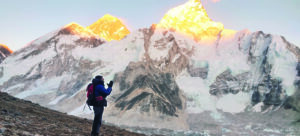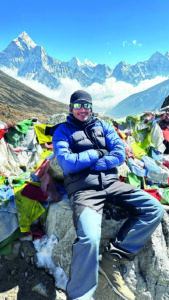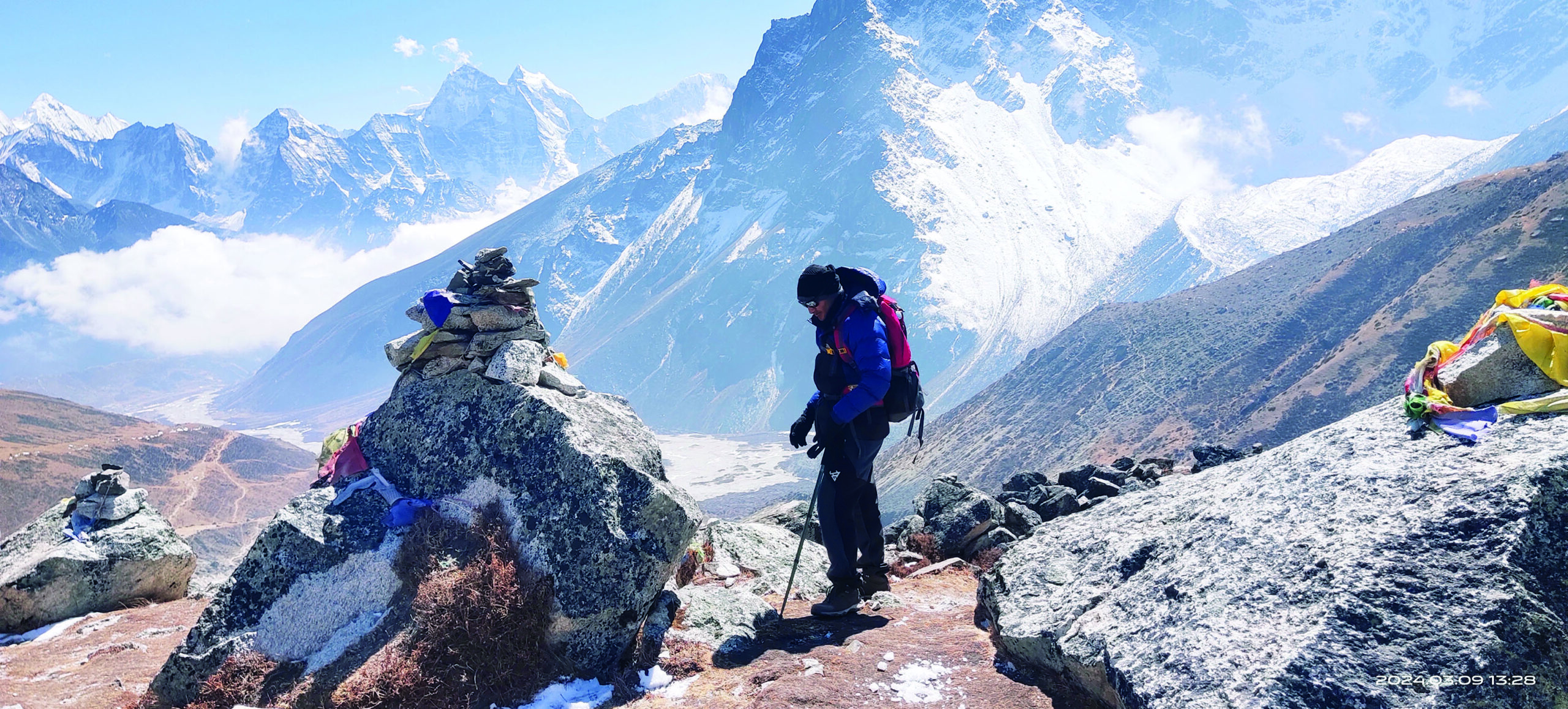 Hormazd Mahiar Panthaki, from Mumbai, recently completed the rigorous trek to Mt. Everest Base Camp (EBC) and Kalapatthar.Starting out from Lukla, Hormazd reached Phakding, followed by Namche Bazaar, Debouche, Dingboche, Lobuche and Gorakshep, to finally reach the Everest Base Camp within a week, at an altitude of 5,364 meters (Above Sea Level). On the same day, he went on to summit Kalapatthar, at 5,550 meters ASL.
Hormazd Mahiar Panthaki, from Mumbai, recently completed the rigorous trek to Mt. Everest Base Camp (EBC) and Kalapatthar.Starting out from Lukla, Hormazd reached Phakding, followed by Namche Bazaar, Debouche, Dingboche, Lobuche and Gorakshep, to finally reach the Everest Base Camp within a week, at an altitude of 5,364 meters (Above Sea Level). On the same day, he went on to summit Kalapatthar, at 5,550 meters ASL.
Sharing his thrilling adventure with Parsi Times, Hormazd Panthaki says, “Embarking on the trek to Everest Base Camp is not just a physical endeavor; it’s a test of endurance, resilience, and a brush with nature at its most extreme. As I reflect on my journey, one thing becomes abundantly clear: it’s a choice between battling extreme weather (lowest I experienced was -17°) or navigating through crowds of fellow adventurers.The reality kicked in from 2nd day. As the altitude increased, so did the challenges. Breathing became labored, and the threat of altitude mountain sickness loomed over us. Staying hydrated and nourished became paramount, ensuring we had the energy to press onward. For me, daal-chaaval emerged as the staple sustenance, that I had almost daily, for lunch and dinner.bathing became a luxury I forewent for the entirety of the 11-day trek, prioritizing warmth and safety. Thankfully, carrying wipes proved invaluable for staying fresh amidst the rugged conditions.”
The daily average climb comprised 7 to 8 hours of steep climbing, with a descent at certain places; including a two-day halt for altitude-acclimatization at Namche Bazaar and Dingboche. “Amidst the challenges, there were moments of levity. A comical encounter in Namche Bazaar, where the sight of steam while urinating sent me into a panic, only to be reassured by a friend from Delhi that it was a common occurrence, elicited laughter and camaraderie amidst the chill,” he shares, on a lighter note.
“Amidst the stark beauty of the Himalayas, the Everest Base Camp trek has become increasingly commercialized, with tea houses abound along the trail. Additionally, for emergencies, fatigue, or when walking becomes challenging, there are options such as renting horses to transport you to EBC. In extreme circumstances, helicopters are available to evacuate trekkers back to Lukla, especially in cases of altitude mountain sickness (AMS). While these services may come at a cost, their availability provides a safety net for adventurers in need,” informs Hormazd.
 Preparation was key, with rigorous cardio sessions and focused strength training laying the foundation for endurance and power necessary for the journey. A discovery he made was when temperatures plummet below freezing, the chemical processes within batteries decelerated, leading to faster drainage. This newfound knowledge prompted him to be more vigilant about safeguarding his mobile phone and power bank by keeping them insulated under layers of warm clothing during the trek.
Preparation was key, with rigorous cardio sessions and focused strength training laying the foundation for endurance and power necessary for the journey. A discovery he made was when temperatures plummet below freezing, the chemical processes within batteries decelerated, leading to faster drainage. This newfound knowledge prompted him to be more vigilant about safeguarding his mobile phone and power bank by keeping them insulated under layers of warm clothing during the trek.
“The arduous trek to the summit presented formidable challenges, but upon reaching EBC, the overwhelming sense of accomplishment made every hardship worthwhile -surrounded by the majestic Himalayas, was a moment of pure triumph and fulfillment, a memory to cherish for a lifetime. Contrary to popular belief, the best view of Mount Everest, isn’t from the Base Camp but from Kala Patthar, situated a little higher up, from where the majesty of Everest truly reveals itself.As the golden rays bathed the towering peak in a warm glow, I stood in awe of the majestic sight before me. In hindsight, the journey to Everest Base Camp was not merely about conquering the elements but embracing the raw beauty of nature and the indomitable spirit of human resilience – a journey that leaves an indelible mark on the soul, a testament to the boundless allure of adventure!” he concludes.
- બરોડાની કોન્ટ્રાક્ટર આદરિયાને 102માં સાલગ્રેહની ઉજવણી કરી - 8 March2025
- વિસ્પી ખરાડીએ નવો ગિનિસ વર્લ્ડ રેકોર્ડ બનાવ્યો - 8 March2025
- પારસી મહિલાઓનું સશક્તિકરણ:મહિલા દિવસનું મહત્વ - 8 March2025
